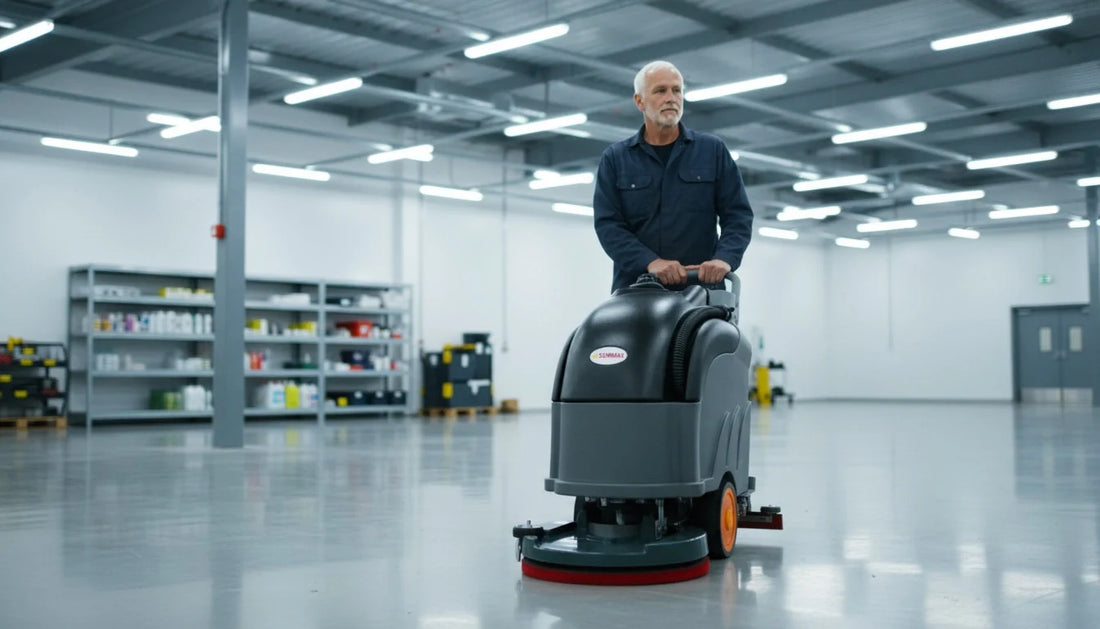
Is a $3,000 Floor Scrubber Worth It? Real ROI Analysis for Small Businesses
When it comes to maintaining a clean, safe, and professional environment, small businesses often face a crucial question: should I invest in a high-quality floor scrubber?
More specifically, is a $3,000 floor scrubber worth the investment? In this guide, we'll break down the real ROI, explore how to choose the right floor scrubber, and see if the benefits outweigh the costs.
Introduction Let’s be honest—cleaning equipment isn't exactly sexy. But for small business owners, especially those in retail, hospitality, or manufacturing, investing in a reliable floor scrubber can be a game-changer. Today, we’ll analyze whether shelling out around $3,000 for a self propelled floor scrubber makes sense for your bottom line.
Understanding the Floor Scrubber Cost First, it’s important to understand what contributes to the price tag of a floor scrubber.

When you look at a $3,000 self propelled floor scrubber, you’re typically paying for features such as:
- Motor power and efficiency
- Battery life and recharge time
- Size and maneuverability
- Durability and build quality
- Additional functionalities like adjustable scrubbing modes or attachment options
Higherquality models often come with longer lifespan and more reliable operation, which are key considerations for a small business.
Is the Investment Justified? Analyzing ROI To determine if a $3,000 floor scrubber is worth it, let's consider the potential ROI through various lenses:
1. Labor Cost Savings
A self propelled floor scrubber reduces the amount of manual labor needed for cleaning. For example, if a staff member takes 2 hours to clean a large area manually, a floor scrubber can do the job in about 30 minutes. Over time, this saves labor hours, allowing staff to focus on other tasks.
2. Consistency and Quality
Manual cleaning can vary in quality depending on the worker. An automated scrubber ensures consistent cleaning quality, reducing the risk of slips, falls, and customer complaints.
3. Time Efficiency
Time saved translates to more operational hours, less downtime, and the ability to maintain a higher standard of cleanliness, which can enhance customer satisfaction and safety.
4. Long-Term Durability
A well-made floor scrubber can last 5-7 years with proper maintenance. When broken down annually, the cost becomes more manageable and the value more apparent.
5. Reduced Cleaning Supplies
Using a floor scrubber can also cut down on the use of cleaning chemicals and consumables, resulting in further savings. Calculating the Break-Even Point Suppose you spend $300 weekly on manual cleaning labor and supplies.
With a self propelled floor scrubber costing $3,000, you would break even in roughly 10 weeks if the scrubber replaces or reduces labor and supply costs by that amount.
However, include other factors such as increased uptime, improved safety, and potential reduction in damages or liability, and the ROI can be even more compelling.
How to Choose a Floor Scrubber:
Tips for Small Businesses Investing in the right equipment is critical. Here’s how to choose a floor scrubber that fits your needs:
1. **Assess Your Cleaning Needs**
Consider the size of your space, floor type, and cleaning frequency. A small retail store may need a compact model, while a large warehouse might require a heavy-duty option.
2. **Look for Self Propelled Models**
These are easier to operate, reduce fatigue, and increase efficiency, especially if you plan to use the machine frequently.
3. **Evaluate Battery Life and Recharging**
Longer battery life ensures you can clean large areas without interruptions. Quick-recharge features are also a plus.
4. **Check Maintenance and Durability**
Opt for models known for durability and easy maintenance. This prevents unexpected repair costs and downtime.
5. **Read Reviews and Seek Expert Advice**
Customer reviews, professional consultations, and demos can give insights into the real-world performance of different models.
Real-World Examples *
Case Study 1: A small cafe invested $3,000 in a self propelled floor scrubber.
They cut cleaning time from 2 hours to 30 minutes daily, saving about $150 weekly in labor costs. In less than 20 weeks, they recovered their investment.
Case Study 2: A boutique retail store replaced manual mopping with a floor scrubber, leading to fewer slips and customer complaints, and a noticeable enhancement in cleanliness perception.*
Conclusion:
Is It Worth the Cost? For many small businesses, investing around $3,000 in a self propelled floor scrubber can yield significant benefits—saving time, reducing labor costs, improving safety, and maintaining a higher standard of cleanliness.
While it may seem like a big expense upfront, the long-term ROI often justifies the cost. If you’re researching how to choose a floor scrubber, focus on your specific needs, operation scale, and the features that matter most.
Remember, the right equipment is an investment in your business's reputation and efficiency. Ready to explore your options?
Start with assessing your cleaning needs and then compare models based on durability, features, and cost. In the end, a good floor scrubber isn’t just an expense—it’s a valuable tool for growth and success.
